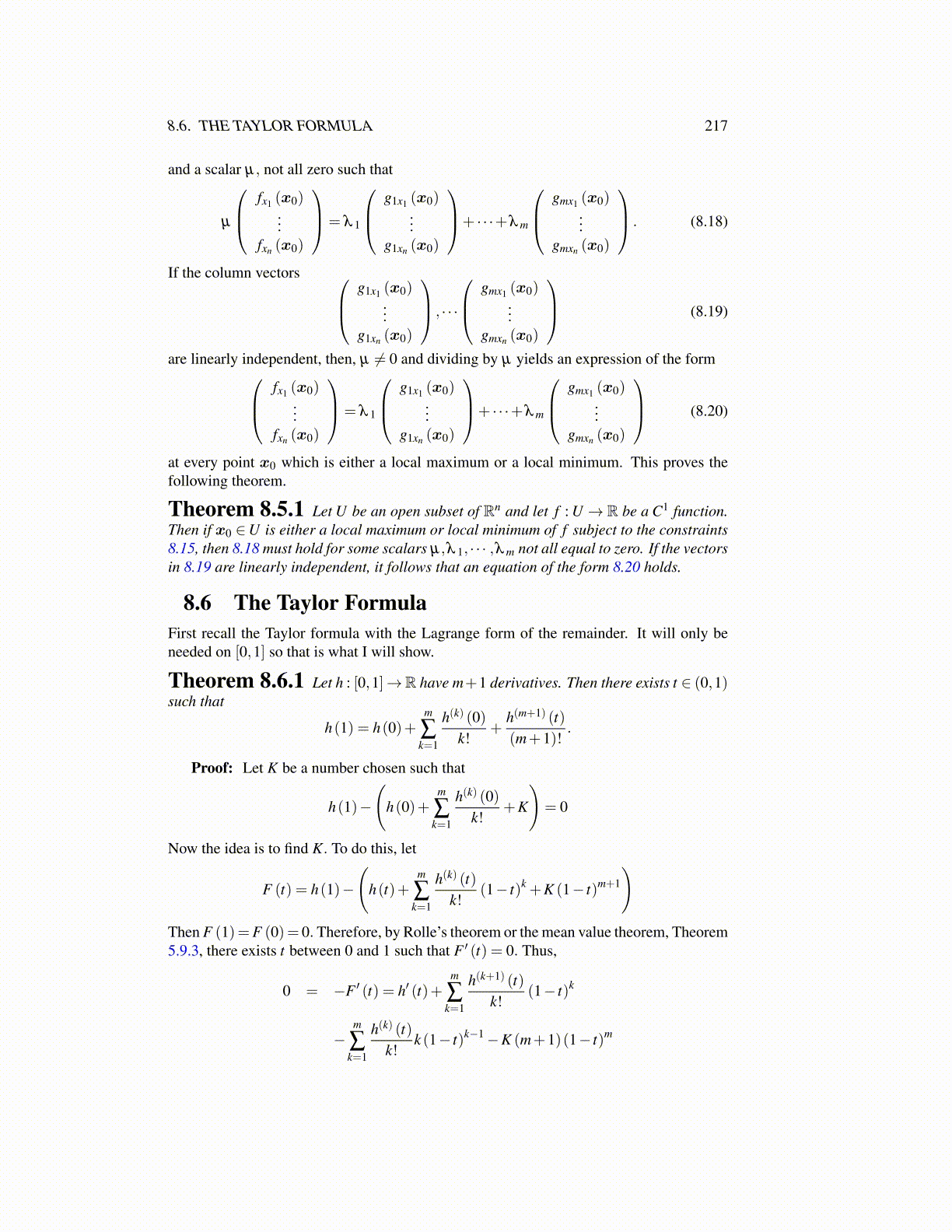
8.6. THE TAYLOR FORMULA 217
and a scalar µ, not all zero such that
µ
fx1 (x0)...
fxn (x0)
= λ 1
g1x1 (x0)...
g1xn (x0)
+ · · ·+λ m
gmx1 (x0)...
gmxn (x0)
. (8.18)
If the column vectors g1x1 (x0)...
g1xn (x0)
, · · ·
gmx1 (x0)...
gmxn (x0)
(8.19)
are linearly independent, then, µ ̸= 0 and dividing by µ yields an expression of the form fx1 (x0)...
fxn (x0)
= λ 1
g1x1 (x0)...
g1xn (x0)
+ · · ·+λ m
gmx1 (x0)...
gmxn (x0)
(8.20)
at every point x0 which is either a local maximum or a local minimum. This proves thefollowing theorem.
Theorem 8.5.1 Let U be an open subset of Rn and let f : U → R be a C1 function.Then if x0 ∈U is either a local maximum or local minimum of f subject to the constraints8.15, then 8.18 must hold for some scalars µ,λ 1, · · · ,λ m not all equal to zero. If the vectorsin 8.19 are linearly independent, it follows that an equation of the form 8.20 holds.
8.6 The Taylor FormulaFirst recall the Taylor formula with the Lagrange form of the remainder. It will only beneeded on [0,1] so that is what I will show.
Theorem 8.6.1 Let h : [0,1]→R have m+1 derivatives. Then there exists t ∈ (0,1)such that
h(1) = h(0)+m
∑k=1
h(k) (0)k!
+h(m+1) (t)(m+1)!
.
Proof: Let K be a number chosen such that
h(1)−
(h(0)+
m
∑k=1
h(k) (0)k!
+K
)= 0
Now the idea is to find K. To do this, let
F (t) = h(1)−
(h(t)+
m
∑k=1
h(k) (t)k!
(1− t)k +K (1− t)m+1
)Then F (1)=F (0)= 0. Therefore, by Rolle’s theorem or the mean value theorem, Theorem5.9.3, there exists t between 0 and 1 such that F ′ (t) = 0. Thus,
0 = −F ′ (t) = h′ (t)+m
∑k=1
h(k+1) (t)k!
(1− t)k
−m
∑k=1
h(k) (t)k!
k (1− t)k−1−K (m+1)(1− t)m